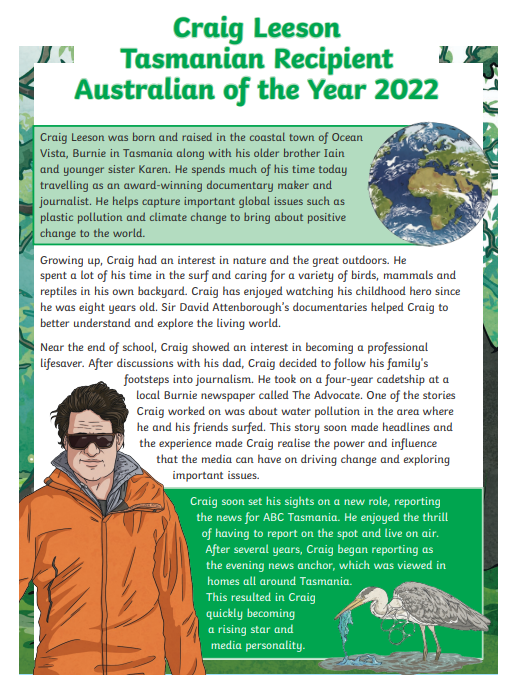
17 Jan Craig Leeson Fact File- Twinkle.com.au
What are Australian of the Year Awards?
Australian of the Year awards recognise the significant contributions and achievements a variety of youths, adult men and adult women have made to the Australian community across the areas of science, medicine, social and community projects, human rights, entrepreneurship, sustainability and responses to threats such as bushfires and the pandemic. The awards provide a perfect opportunity to reflect on the efforts of everyday Australians and why we should feel proud to be Australian.
The Australian of the Year awards recognise people from one of these four categories:
- Australian of the Year
- Senior Australian of the Year
- Young Australian of the Year
- Australia’s Local Hero
Each year, 32 people are selected as finalists from Australia’s various states and territories, with the winner for each category announced on Australia Day eve at a special ceremony in Canberra.
When did the Australian of the Year awards begin?
The Australian of the Year awards are hosted each year by the National Australia Day Council and closely align with Australia Day celebrations held on 26th January. The first awards were presented in 1960.
How does this resource support the Australian Curriculum?
This fact file on Craig Leeson addresses the following English and HASS curriculum outcomes.
- ACHASSI052 – Pose questions to investigate people, events, places and issues
- ACHASSK072 – Why people participate within communities and how students can actively participate and contribute
- ACHASSK064 – Days and weeks celebrated or commemorated in Australia (including Australia Day, Anzac Day, and National Sorry Day) and the importance of symbols and emblems
- ACHASSK137 – The contribution of individuals and groups to the development of Australian society since Federation
- ACELY1680 – Use comprehension strategies to build literal and inferred meaning and begin to evaluate texts by drawing on a growing knowledge of context, text structures and language features
- ACELY1692 – Use comprehension strategies to build literal and inferred meaning to expand content knowledge, integrating and linking ideas and analysing and evaluating texts
- ACELY1702 – Navigate and read texts for specific purposes applying appropriate text processing strategies, for example predicting and confirming, monitoring meaning, skimming and scanning
- ACELY1713 – Use comprehension strategies to interpret and analyse information and ideas, comparing content from a variety of textual sources including media and digital texts




No Comments